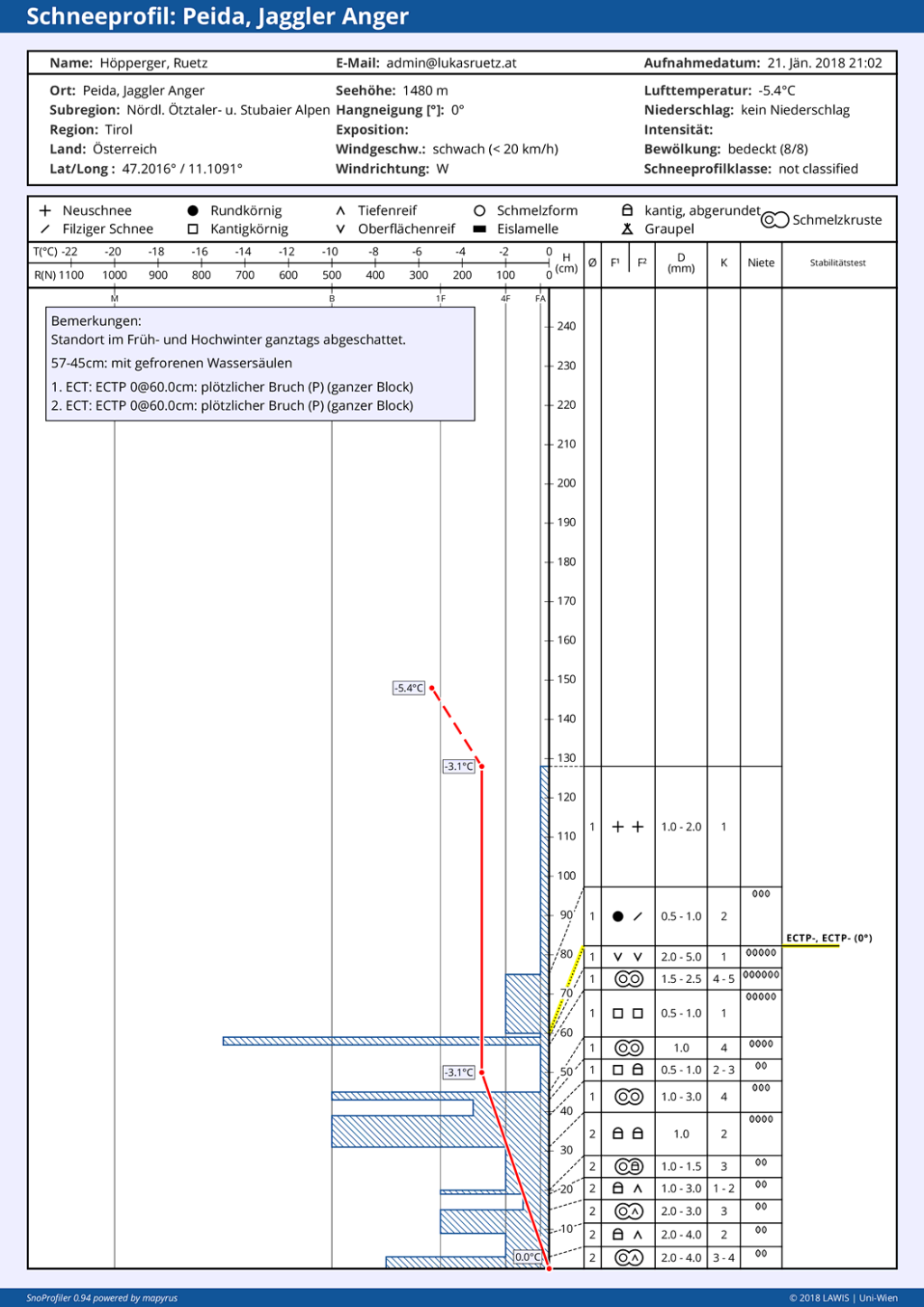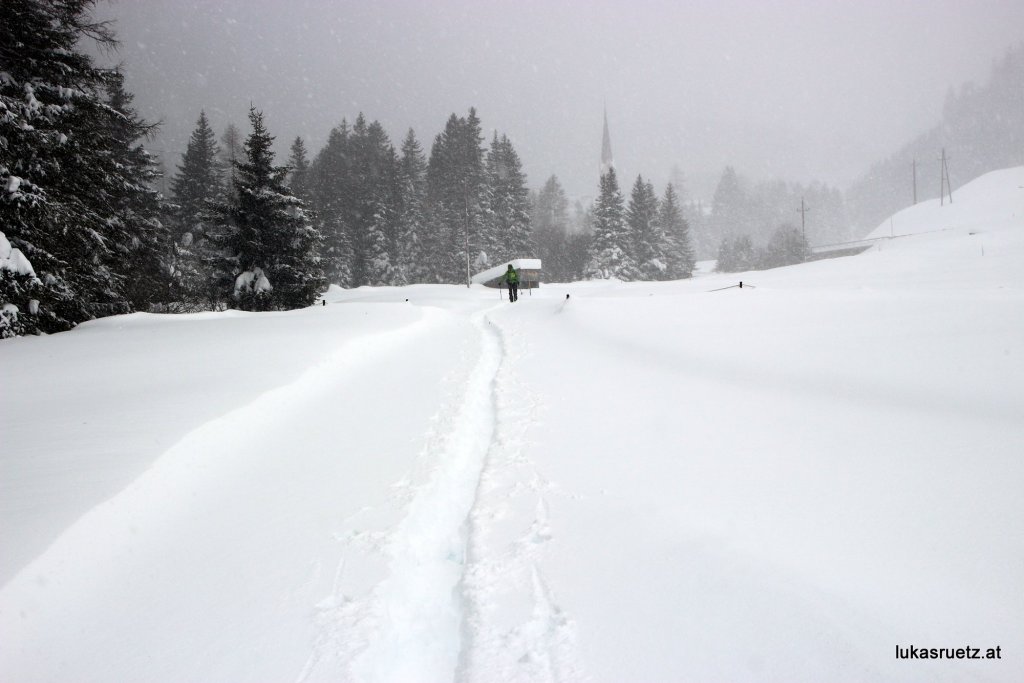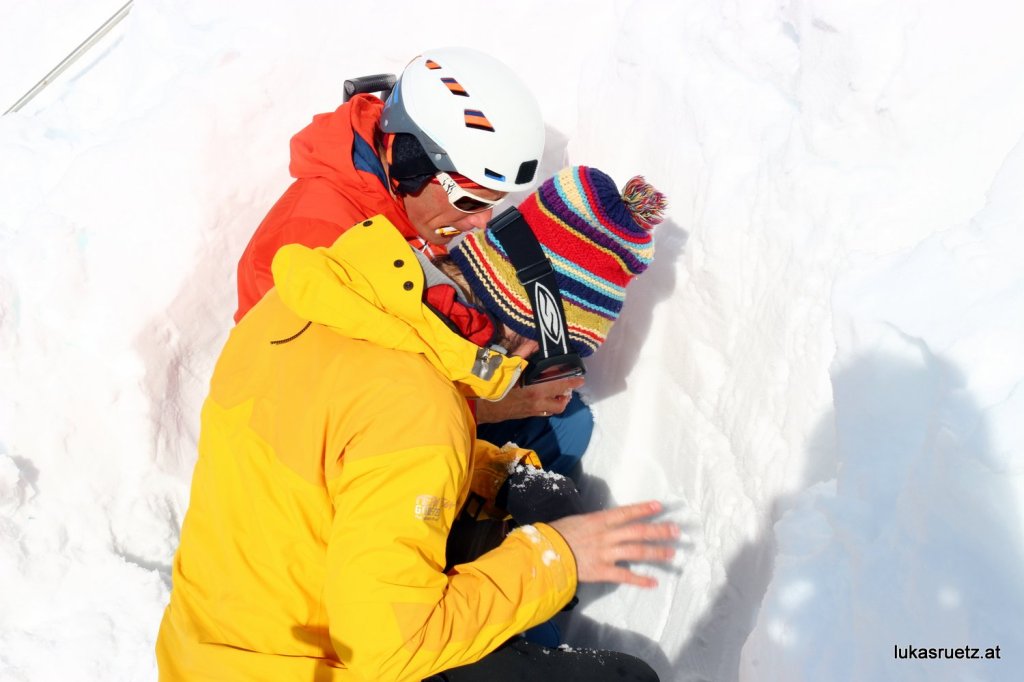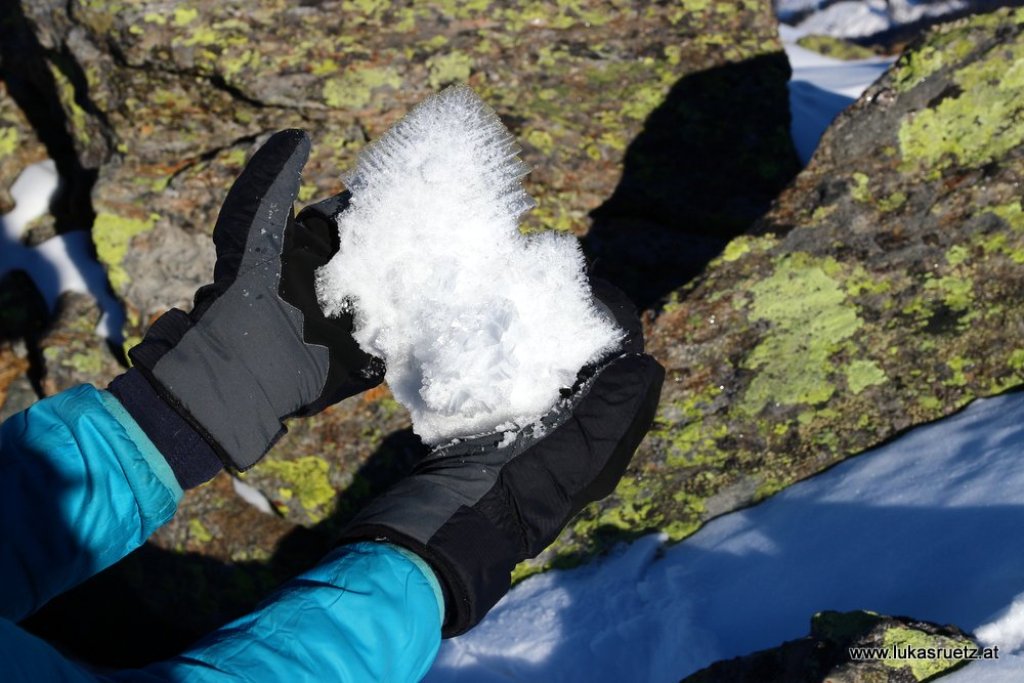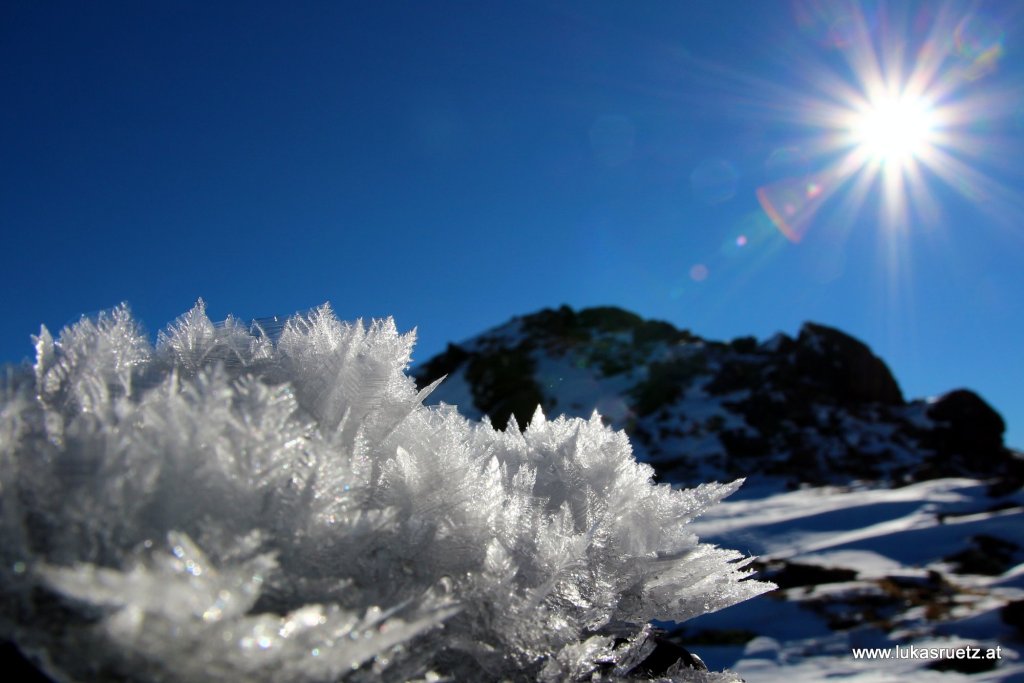Interpretation
The snow profile shows a very interesting sequence in the lower area between melt crusts and formerly built-up layers (angular & deep rime) that have already undergone noticeable degradation (rounded off). The degradation of the weak layers is caused on the one hand by a low temperature gradient and on the other hand by the pressure of a heavy load from recent snowfall.
The layers up to just over 30 cm are slightly moist. It is no longer possible to say whether the ground heat has had an effect here or whether a higher air temperature or even rain was the decisive factor for the moisture penetration some time ago. At this altitude, it could have been anything in January. The same applies to the numerous melting crusts - whether rain or temperatures a few degrees above 0 can no longer be said.
There is a large amount of fresh snow, which must come from a high intensity of precipitation that is still taking place or has just finished. Because if the snowfall at a snow temperature of -3°C had already been half a day or more ago, most of the fresh snow would already have been converted to felt. At a high absolute temperature, transformation processes take place much, much, much faster. Whether degrading (= settling) or building transformation.
With a gradient from -5°C to 0°C on one centimetre of the snow cover, the building transformation (= facet formation) takes place much faster than with a gradient from -20°C to -15°C per centimetre - although the gradient is equally pronounced. The strength of the gradient only determines whether the snow cover transforms by breaking down or building up, the absolute temperature determines the transformation speed. Temperature is nothing other than the speed of movement of the molecules - the warmer, the faster. If the anthill scurries faster, then it can build something up more quickly but also break it down. This is why deep frost forms much more frequently near the ground, because it is always 0°C warm there (ground heat from the earth's interior) and therefore the absolute temperature is very high.
The same applies to decomposition or settling: Isothermal at -1°C is quite different from isothermal at -20°C. In both cases, the snow cover degrades. In the first case in a few hours to days to a completely compact stick of round-grained crystals, in the second case in tens of weeks.
The former weak layers close to the ground are de facto no longer relevant for the avalanche risk. They are already noticeably solidified again. What is relevant, however, is the layer of surface frost - very easy to derive from the ECTP0 test result. However, if the surface frost is not to be found over larger areas, the angular layer just below it plays the greater role for the avalanche risk. A PST (Propagation Saw Test) would have been useful here to assess the behavior of this angular layer. With an ECT, it was hardly possible to address it due to the overlying V-layer, as the surface frost had already broken beforehand. This means that the surface tire takes the necessary snow slab from the following weak layers. With a PST, in which you "cut" through the weak layer with a string or saw, you can test a weak layer directly without including the overlying weak layers in the result.
In this case, the weak layer of surface frost has already generated small settlement noises when the terrain is entered. A subsidence noise occurs when a weak layer breaks, the snow slab sinks slightly and the air between the crystals of the weak layer is pressed out at the tensile cracks. The settling noise is, so to speak, the release of the snow slab on the flat. In other words, where the snow slab cannot slide off after breaking due to the insufficient steepness. The weak layer then breaks in exactly the same way, but the snow slab remains in place. It only changes its position by a few centimetres of descent.
Note: The temperature gradient determines whether a build-up or degradation transformation takes place. The absolute temperature subsequently determines the speed of the transformation process.


